BEP CZone Signal Interface, a NMEA 2000 winner
That screen above makes me so happy! I had been reluctant to give up on Gizmo’s standalone tank monitoring system but circumstances forced a change. Had I realized how easy and relatively inexpensive it was to switch the tank senders over to BEP CZone NMEA 2000 monitoring — and how accurate and flexible the output would be, even to the point of custom (and juvenile) tank labels — I would have made the leap a long time ago…
Aside from the Volvo Penta engine panels the Wema Tank-level Indicator is the only remaining gauge from when I bought this boat in 2009 and it was probably there when she was launched in 2000. If it works don’t fix it, right? But in fact it never worked very well; I just didn’t realize it. The Poop Tank in particutlar was highly inconsistent, staying at “0” for unreasonable periods and sometimes jumping to “4/4” seemingly overnight, but didn’t it make sense that even a specially protected sliding level sensor might fail after so many years in those conditions?
The situation took a bad turn last September, just before I headed south. Suddenly the fuel tanks showed significantly different readings than they had the day before even though the engine had not even been run. That got my attention and though the readings got consistent again once we started bouncing around a bit yours truly also got more consistent about logging miles, engine hours, and tank in use, and I took further measures, so to speak…
Yup, I started using a weighted line to occasionally measure fuel tank levels and felt fortunate that the boat’s short, straight filler hoses make this easy and fairly accurate (I think). I also think that the tanks are rectangular, which would make a linear measurement equate well to volume, though I avoided assumptions that could get me in trouble. I intended, of course, to replace the Wema gauge or try something else, but didn’t actually do anything until using the gauge became a matter of jiggling the on/off knob just so and then it died completely early in the trip north.
Also on the (very long) to-do list was testing some BEP CZone modules, including the Signal Interface which is purportedly capable of reading 240-30 Ohm tank senders like the Wemas. The hardware install could not have been easier. I just snipped the blade connectors off the tank and -12v wires that once went to the Wema gauge inserted them into the SI’s removable terminal strip, added a NMEA 2000 drop to the boat’s SimNet network and that was about it. In the photo I tried to show how the module is designed so that you can wire up the gasket and terminal strip away from the module and then put it all together in one easy move. Nice!
Then there was the CZone Configuration Tool, which is a Windows PC program that connects to the modules via a USB CAN Adapter. It seemed daunting at first but I’ve now managed to configure a few modules with it and I’ve hardly cracked the manual. I should do some reading though and I already see that there are impressive capabilities I haven’t tried yet, but let’s focus on the tank configuration screen above. What I love is shown in the bottom window where I am about to set a calibration point using “live data” from the sender. That means I’ve already been able to set tank percentages based on string measurements made at the same time and when I find a very patient fuel dock I’ll be able to set or edit as many points as I want in terms of gallons.
But equally important, I think, is that this live calibration feature has let me easily observe the sender states. What I’ve learned so far is that all the Wema senders, even the one submerged in Black Water, are remarkably consistent day-by-day for a tank that hasn’t been used and seem to make good sense about what is used. The only exception I’ve seen so far was a 8-25% wobble in the starboard fuel tank when it was down to 3.5-inches and the boat was rolling mildly, and I seem to have improved that with another level guesstimate. And the story gets even better…
CZone is thought of primarily as distributed power and digital switching system (as discussed after the Miami Show) and that stuff is done using proprietary NMEA 2000 PGNs. That means you can only make the switching work using a CZone display or a Simrad MFD (because Simrad and BEP have a partnership). I can confirm that as I also have a CZone Output module in operation (slickly), but the monitoring modules output standard PGNs as seen on the Raymarine i70 above, as well as on a Garmin GMI 10, a Maretron DSM, a Furuno TZT (fuel only) and elsewhere.
What doesn’t carry across the system are the custom labels. In other words “Black Water” is a tank level category built into NMEA 2000 but “Poop Tank” is a custom label only supported so far by Simrad (though I believe that custom label concept is in N2K, just not widely utilized). At any rate, I’m delighted with what I’ve found so far, and there’s much more yet to report. For instance, those temperatures seen on the NSS8 GoFree screen below are coming from a Maretron TMP 100, and that “Engrm” one, actually block temp, could proof itself invaluable. But consider this: when I do a major fuel fill in New Bedford tomorrow I should be able to see what’s happening on an iPad. And whereas I also use fuel and waste tank levels to keep Gizmo trim — they’re all outboard — I’ll be able to use the same screen when pumping overboard (where possible). I don’t think I’m going to replace the broken Wema gauge.


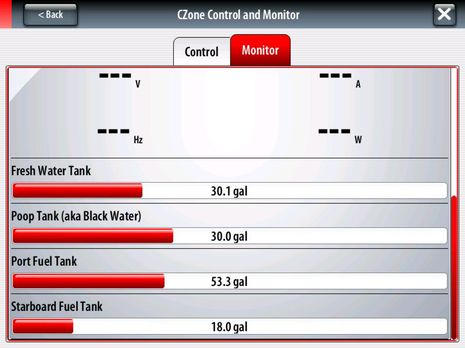
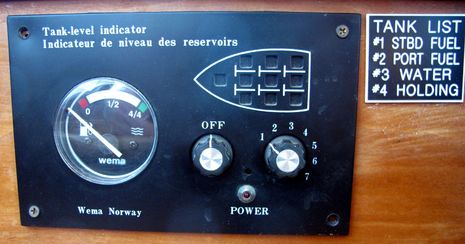
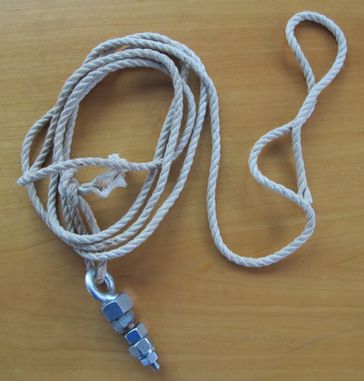
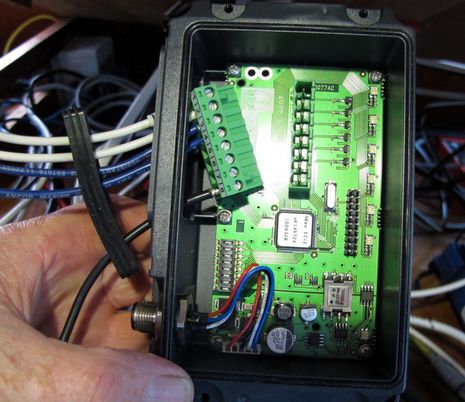
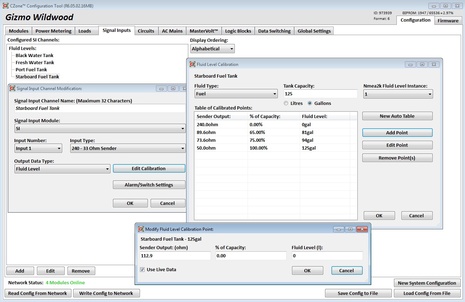
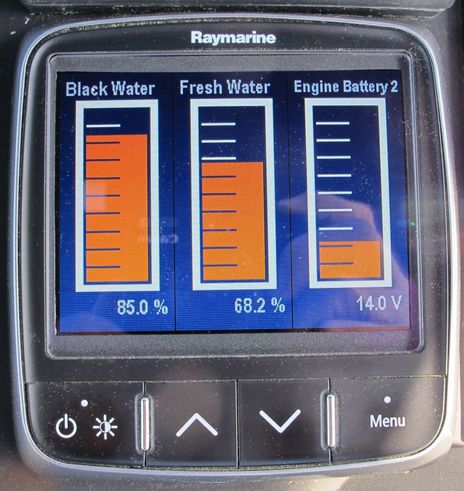
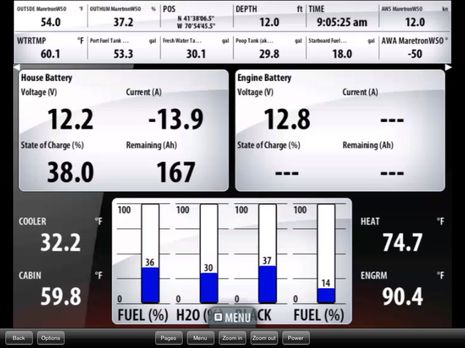
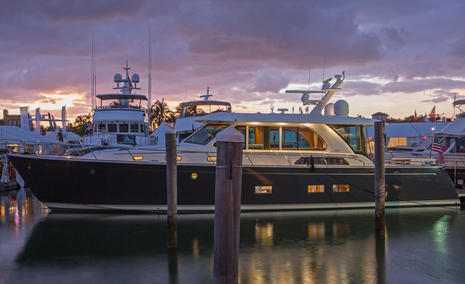










Ben,
Though we haven’t finished getting the tank sensors finished up, we’ve just completed some power distribution work with C-Zone as part of an electronics system overhaul on a Cherubini 48 Schooner. Based around a pair of NSS MFDs the owner can control Tricolor, Running lights, Windex, Steamer, and Foredeck lamps from either MFD (nav station or helm). I’m sorry I failed to take screen shots as the lighting functions also neatly show current draw on each. The C-Zone setup made cockpit control of the above deck lighting a far simpler installation versus setting up a conventional switch panel at the helm.
When we get the tanks done I’ll try to send pics. I really think C-Zone will find it’s way into more and more refits.
Thanks, Jonathan. Am I guessing correctly that you are a professional marine electronics installer? One issue with the CZone gear is that it is mainly marketed to pros, though several Panbo commenters have been able to buy equipment and get technical support for DIY projects.
For instance, I can only find one retail online source here in the States and I’m a little dubious about the prices stated, like $131 for the Signal Interface module just seems impossibly low. Even the purported Minimum Advertised Price of $237 seems an amazing deal for a module that can handle a mix of six tanks, switches or on/off sensors like high bilge alarms. Plus they don’t list the USB CAN Adaptor which is the only other bit needed besides the free Configuration Tool to do what I did with my tanks. Anyone know if Boatersland CZonepricing is for real or other sources:
http://www.boatersland.com/
Incidentally, I’ve enabled similar nav light switching using the Maretron DCR100, as I wrote about here:
https://panbo.com/archives/2013/02/maretron_dcr100_partial_install_lights_on_labels_up.html
It’s been working quite well, including an alarm I’ve set up to warn of bulb failure (Maretron alarming is trail blazing and will get an entry).
It may sound crazy to have both Maretron and CZone on the same boat, and it’s mainly because this boat is a test lab, but actually there’s a lot of sensing and monitoring that’s not currently duplicated. Goes to show how much is possible as NMEA 2000 bridges power and other systems to instrument and multi-function displays.
Been watching your progress up the coast. Good stops. Be sure to stop in at Margarets in New Bedford for scallops.
I think what your showing will work on the SallyW to monitor her new fuel tanks, replacing that funny little fourway switch to select sensors. I have the Garmin GMI 10 already. Willing to take some photos of that install for you. Maybe see you in Camden next week.
Allan, I ate at Margerates last night! And they had the same EIGHT scallop specials as sister restaurant Elizabeth’s did on Wed., which was not a problem
New Bedford/Fairhaven make a fantastic cruising stop, I think. Besides prowling the yards and fishermen docks, I’ve been to the museum and also visited Imtra and Edson (both impressive operations). Soon I hope to fill up on what may be the least expensive and freshest diesel in New England, then on to Onset and beyond.
I should be able to show you the CZone tank set up late next week, but only if the Gulf of Maine gets friendly.
Ahh, the Wema tank monitor.Finicky to set up and you never really knew what was going on!
Did any ever work out there in the real world?
Ben,
Great story. How are you getting the battery info shown in the final picture.
Thanks
Thanks, Steve. The house and engine battery info is coming from a CZone Meter module. It was again a very simple install as I already had a 50 milliamp shunt installed from the Link 1000 system I took off the boat last spring.
Calibration, however, is not so easy. It’s not BEP’s fault, the tools are there, but in my case I can’t set a live point without having the inverter and computer on and I don’t know what they draw. Plus, though I know the shunt was quite accurate with the Link, I’ve complicated things since with the solar panels. Wish I could drop a weighted string into my twin 8D’s to measure its amp hour state!
At any rate, I’ve got it roughly calibrated and it is showing me trends at least. Plus I have some other battery monitors to mess with including an electronic Victron shunt and BMV 600 gauge that can be adapted to NMEA 2000.
Hi Ben,
I think the Boatersland prices are legit.
Their below MAP prices once you put them in the cart are pretty similar to what I paid for my modules. Most are slightly more expensive than what I paid (5% – 20%), but the Signal Interface is $20 less than I paid (but it’s the cheapest module).
I think the SI is so cheap because it really is the simplest functionality of all the modules.
I think it’s only a matter of time before more marine retailers have the gear. It seems that there is a steadily growing group of people using it in rewiring their boats, and finding out what is capable with it.
I was talking last week to a marine electrical business owner here who sells C-zone and has started installing C-Zone systems in rewiring projects. His comment was that the hardest thing was unlearning the way of thinking about traditional wiring looms and functionality so that you can take advantage of the many new features available. I totally agree with that.
Cheers,
Paul.
Thanks, Paul! I realized that Gemeco offers all the CZone gear wholesale and that I had a copy of their (amazing) 500 page 2013 catalog. The Signal Interface module at $130 via Boatersland is a hair below wholesale so it is a bit of an anomaly, but then again the wholesale cost of a Maretron or Garmin analog-to-N2K adapter for just a single tank is significantly more. Not all the CZone stuff is so reasonable, as you note, but it’s not bad.
I hadn’t really looked at the Gemeco catalog before, but I sure will use it in the future. I think they list just about every NMEA 2000 sensor, cable, adapter, etc. made by any manufacturer major or minor, and are also strong in several other categories. Plus they include a lot of good reference info. Gemeco is a good reason for DYI folks to cultivate a good relationship with a professional installer or dealer, but the catalog is available online, though without pricing:
http://www.gemeco.com/
Ben,
Where can one obtain the “CZone Configuration Tool, which is a Windows PC program”?
Cheers,
Doug
Doug,
When I purchased my C-zone components from the Singapore reseller/agent he registered me with BEP and I now get all the software updates emailed to me.
I tried to look at how I got the first software (I can’t actually remember since it was 2010) – I assume it was on a disk when I bought the first component, but I couldn’t find that. It may have been a link to a download that they sent me.
Anyway, they’re good at sending me the updates.
I’m not sure how they’ll do it via volume retailers like Boatersland. I assume it’ll just come on a cd with the components and you’ll register.
You can always try emailing sales@bepmarineinc.com and ask. (That’s the email address they give in the Czone manual for the US)
One other thing – you also need their (BEP’s) USB interface to use the config tool. I have both Actisense’s NGW-1 & Airmar’s (that came with the PB200 & I believe is also Actisense’s in an OEM package) N2K:USB and couldn’t use either (a bit irritating). So don’t forget to buy that if you need to configure a Czone system yourself.
Cheers,
Paul.
Paul,
Without the USB Can Adapter (pricey bit of kit) or programming, would your experience indicate that the CZone Meter Interface would provide PGNs to my NMEA 2000 network so I could at least monitor battery voltages on my displays?
Cheers,
Doug
Hi Doug,
I’ve never done anything without using the software programming and N2K:USB link because my system has about 20 C-zone modules and it was just easier to use the software.
However, I think it should be possible to do what you say.
Each Czone module has the full system configuration in it, so there’s no “central processor”. This means that if you can configure just one module, then if you have other modules in your network, they’ll be automatically configured when you plug in the configured module. So, you need to figure out how to get 1 module configured.
The “Czone Installation Manual” has the following info:
– There are 3 possible ways to configure your network: 1) using the s/w & the USB:N2K gateway, 2) from a Display Interface, 3) by plugging a module with a configuration on it into a network that has not been configured.
– It also lists 16 proprietary PGNs, and then says that it can also pass approx 200 standard N2K pgns, but doesn’t list them.
The proprietary PGNs listed are all network management and specific module configuration PGNs, not informational data PGNs, so that would lead me to surmise that almost all of the informative data is transmitted using standard N2K PGNs, including the Meter Interface data (but I don’t know that for sure).
That should mean that if your display can read those standard PGNs, then if you can get your network configured, you should be able to see them. Be aware though that many of the displays can’t display a lot of the standard PGNs, they seem to have quite limited PGN recognition, so check. The Maretron displays seem to have the biggest list by quite a wide margin.
So, how to get your module configured (the Meter Interface needs to be calibrated, so you need to be able to do that somehow).
1) The USB interface part number is 80-911-0044-00. I couldn’t find that listed on the Boatersland site, but I’m sure they can get one. I paid about the same as a Switch Control Interface, which Boatersland has for $165, so I assume they’d charge close to that. I don’t think that’s too bad if you’re going the Czone direction – it’d make the future a lot easier as you add modules.
2) Put a Czone control display into your network – this is probably a good idea if you’re thinking of expanding it in future. There are 3 options: 1) The BEP Display Interface ($720 from Boatersland). The negative of the DI for configuration is that it’s very tedious going through all the button presses – much easier through the PC s/w; 2) one of the cool touch screens that BEP offers (very expensive – i.e. $000’s – we’re using one at the nav station – it replaces the traditional Blue Sea breaker switch panel – but we’ve repalced our entire boat wiring with Czone so figured it was worth investing in), or 3) if you have a Simrad or B&G MFD you can control Czone ( I assume that this includes the configuration options but I don’t know that for certain).
3) Find someone with a USB module and the software, and configure your module through them, then plug it into your network. Other non-configured modules will be automatically configured. (but the negative is that I don’t think you can then reconfigure your network the same way if you want to change it). I would hope that a Czone installer near you would do that for a reasonable fee if you know the config parameters.
A bit long-winded, but hopefully is detailed enough so that the options are understandable.
It sounds like Ben is doing it one module at a time also, so Ben, how did you configure your module?
I hope this is helpful.
Cheers,
Paul.
Thanks, Paul. I think you gave good guidance, but I can add more about how the Simrad MFDs and CZone work together.
First note that I too am using the USB CAN Adapter and Configuration software to set up and calibrate the test CZone modules. I’m afraid the Adapter is more expensive here than where you are, but it certainly works well and I suspect that any boater who wants to install CZone themselves should use this set up. I’ve used it quite often as I’ve fine tuned my tank and battery calibrations, for instance.
That might not be true if the Simrad displays could configure CZone, but they can not. However, the integration is nonetheless slick. When I first configured Gizmo’s CZone system and then turned on the Simrad NSS and NSE they read the configuration and automatically set up nice switching and monitoring pages that come up first by default and are also available via a new CZone icon that appears in the Pages menu. The data is also available for custom instrument windows like the one shown at the bottom of the entry, and updated configurations are loaded at the next boot up.
Doug, I think you have to configure any CZone module. If nothing else, the Meter module has to be told what its inputs are and I suspect that any shunt, even CZone’s own, may need calibration.
Thanks makes sense, Ben. Our B&G Zeus Touch is shipping to us right now, which is why I’m not au fait with the details of the integration. I read the manual and didn’t see any mention of configuration, but mostly it just says “see the Czone documentation”.
I absolutely agree with you that anyone seriously looking at a Czone installation should ante up for the USB interface – makes configuration and changes so much easier.
I’ve enhanced my configuration considerably since the first iteration as I learn more about the capabilities (or just want to try something out): I’m on version 6.3 of my config tinkering (I apply a software style numbering to keep track of all the changes properly).
Paul.
Could I use my Actisense NGT-1 NMEA2000 gateway to access Czone modules?
Would I just need the software then?
Would Czone supply just software?
I have Simrad NSE’s on board I can use as displays.
Hi Peter,
Apparently you can’ use the Actisense gateway. I asked that when I bought my first Czone stuff 3 years ago. I don’t know why (maybe Ben can supply the answer?).
At the time they said the only other USB interface that would work was the Simnet one. Maybe others also work now, but I wouldn’t put money on it.
3 years ago BEP gave the software to me through a link in an email to a download page (I finally found that first email with the link – it was from Apr 2010). They didn’t charge for that. So I assume that if you buy some Czone components today you’ll still get the software link for free.
Cheers,
Paul.
Thanks for all the info,Paul,much appreciated.
I plan on buying an interface module and USB/SW to play with.(self training)
Sorry – I just saw my previous post. Typo in the first sentence – it should read “you can’t use the Actisense gateway”. Got the apostrophe but missed the “t”. My apologies if it caused any confusion.
Paul.
I have been perusing the Czone product line in the Bep catalog.
The AC systems are way overkill for the size of boats I work on.I wonder if Bep is planning to expand the product line to cover something like a 30amp 120volt single inlet with 15 amp branch circuits.
I came to the same conclusion about the AC switches – definitely not needed for our 46ft sailing yacht. So we have a mostly traditional AC system not using Czone.
They introduced the AC a few years after the DC, but I haven’t seen any indication that they’ll put out smaller systems. It may be that to get the Czone style benefits with AC they need to be that big.
Clearly aimed at large power boats with many AC circuits.
Paul.
I recently read that proprietary PGNs are the lowest priority on N2k. In a distributed power system, any latency issues are likely to go unnoticed. Is there any concern out there about more time sensitive data going over proprietary PGNs. It seems the “open” N2k standard is seeing more manufacturers deploy proprietary PGNs. How will that effect the quality of data on the bus…
Hi Eric, I believe it’s true that proprietary PGNs have the lowest priority and I think it’s the right way to go. I certainly want developers to be able to create functionality faster than NMEA writes standards, but I also like the idea of incentives to make new ideas standard.
But I’m not seeing issues with proprietary PGN latency. Since early on my trip north I’ve had both of Gizmo’s N2K networks bridged (with a simple BEP product) and so all the screens and sensors you see in recent entries are all on the same bus. That means something like six GPS receivers and two forms of digital switching, Maretron’s and BEP’s.
Various diagnostics indicate that the bus is only working at about 25% capacity and I’ve never seen a delay or mistake in switching. Not to say there haven’t been issues, but it’s oddball stuff like miscalculation of headings because devices apparently get confused by multiple variation sources. I look forward to the Mystic Valley smart bridge which will let me filter which PGNs cross over.
Incidentally, the N2K Power PGNs are now official:
http://www.nmea.org/store/index.asp?show=pdet&pid=322&cid=7
But I’m not sure that any company is using them yet, and there may be reluctance. N2K has supported ultra high priority engine commands almost since inception but that hasn’t meant that the engine manufacturers jumped onboard.
I also recently learned that no BEP CZone product has yet received NMEA 2000 certification, even though BEP was one of the first to work on the power standards. I’m disappointed about this and hope they fix it, but I also think that seeing so many builders go with CZone — a wicked big decision — should trouble NMEA in terms of how highly certification is respected.
https://panbo.com/archives/2013/03/mibs_czone_tour_enabling_the_car-like_boat.html
Hi Ben,
Sorry to post to an old thread, but could you tell me if it is possible to configure the TS1 ultrasonic tank sensors through the czone module using the USB configuration tool, or would you still have to use the TS1-PK programmer for the sensor?
Thanks!
No problem, Okengr; I certainly don’t think this thread is obsolete. But I wasn’t familiar with BEP’s TS1 tank sensors and they do predate CZone:
http://www.bepmarine.com/home-mainmenu-8/product-263/ultrasonic-tank-sender
In fact, I’m not sure they’ve been updated since 2010 and I don’t see them available at many sources.
At any rate, they were designed to work with traditional U.S. or European ohm sensing tank level displays, so they should work with the CZone Signal Interface just like my old Wema senders did.
I’d also guess that you could calibrate them with the CZone configuration software like I did, but I suggest that you check first with BEP or a dealer like Budget Marine:
http://www.budgetmarine.com/Catalog/Outboards+%C3%BE+Engine/Gauges+%C3%BE+Senders/Ultrasonic+Tank+Senders/BEP+Ultrasonic/product.aspx#.U2GZkfldV8E
If you don’t already have CZone gear or BEP senders you might consider Maretron Ultrasonics:
http://www.maretron.com/products/tlm100.php
You’d still need a Maretron gateway (or display) to calibrate the senders, but you wouldn’t need a Signal Interface to convert their output into NMEA 2000 that could be shown on many displays.
OK thanks for the helpful info. I’ll drop Budget Marine a line with the question. I picked up three TS1 sensors on closeout and Boat Electric was going to program them before shipment but can’t find their programmer so I’m trying to find a way around it without buying a TS1-PK. On another note, which display would you recommend for the czone at the Nav station? Initially I would just have my tanks and AC/DC monitor info to display.
Sorry, it’s still not clear what you’re doing. The TS1 sensors are not CZone and they won’t output NMEA 2000 without a CZone Signal Interface or similar.
Yes, sorry I wasn’t clear. I was planning to connect the TS1 sensors to a czone Signal Interface (SI) module as you mentioned. Then hopefully I could program their tank configuration parameters for non-linearity using the czone USB interface and configuration tool. My other question concerned what display to hang on the N2K bus in order to read the output from the czone SI and MI interface modules. I am not too keen on $700 for the small czone display and I’m wondering if a Triton or Garmin or similar might be a better choice for the money.
Right, if you do the configuration on a PC you do not need the CZone display. Almost any N2K display will probably show the tank and battery levels but Simrad or Garmin are probably better as at least the MFDs are designed to interface with the whole CZone system. I can’t remember if the Triton showed the custom names I created for my tanks, but that’s icing on the cake.
OK, thanks. I’ll check out the Simrad too.
okengr,
We have a full C-zone system: both control & monitoring systems.
We have one of their touch screen interfaces at the nav station. Really expensive but very cool.
In the cockpit we control and monitor the entire system using our B&G Zeus-touch MFD. It gives us full control and monitoring capabilities.
We can also view most system data using our Maretron N2K displays (or I assume most other N2K displays these days).
So, your options for viewing data are many. However, if you’re planning on adding some system control capability, then you’d be best going for one of the control and monitor options now: B&G, Simrad, Garmin MFD, or BEP’s own touch screen.
It’d be nice if they had a PC based live monitoring & control interface, but they say that’s not a current high priority for them.
Also, one thing I’d recommend on your installation is the following that we’ve done. Because our entire boat electrics is controlled by C-zone (through an entire rewire project), we want the C-zone system to always function. In addition, our instrument network is a fairly significant N2K system. So, we’ve put in 2 separate N2K networks: one for the instruments, the other dedicated to C-zone. We’ve then bridged them using a network bridge (BEP’s in our case). This enables data to be shared, but if one network goes down we don’t lose both. If you’re thinking about an extended C-zone system over time, you might want to start off with separate networks now.
I hope this info helps.
Cheers,
Paul.
Hi Paul,
Thanks for the very helpful post. I currently have a Garmin 4208 at the helm. Will it be able to handle the control side of things you spoke of? For the Nav station I’m trying to decide between the Garmin GMI 20, Simrad IS 40, or the B&G T41. They all seem to be priced about the same. Do you think one of them has advantages over the others for this application?
Do you turn your Nav network off when at anchor or do both networks stay on essentially all the time?
Thanks again
Hi,
Sorry, I don’t know anything about the Garmin MFDs which are compatible with C-zone: I think Ben probably has some knowledge. I imagine it’s only their latest releases since it’s only been this year when that’s happened.
I know that the Simrad/B&G interface is pretty slick and gives access to all the C-zone functionality. But Simrad first did that integration a few years ago so they’ve had time to get it right.
Also, I don’t have any comments on the best instrument display for your nav station. We don’t really use our instruments to report on C-zone much because we have all the other displays I mentioned.
I would say though that I don’t believe any of the nav instrument displays both data reporting AND C-zone control functions. I believe that they can only report N2K standard PGNs which are generated on the C-zone network: not anything else like proprietary C-zone info nor send commands to C-zone. For those I believe that you need either one of those MFDs, or a C-zone specific control display (Ben, do you concur with that?).
I don’t think using c-zone just for reporting of tank depth and other things is the best use of it: as Ben pointed out earlier there are other options for reporting those. To me the strength of C-zone is the switching and input triggering functions.
Given that, I’d think you’d really want a nav station display which can actually control the c-zone rather than just report on it. If you don’t want to put in a BEP controller, you could always look for one of the lower end garmin or simrad mfd’s which support c-zone.
Yes, we turn the instrument network off at anchor mostly, but of course leave the c-zone network on so that we can control our switches. That’s another benefit of having the dual n2k networks.
I hope this helps, and that Ben knows more about the Garmin products and c-zone.
Cheers,
Paul.
FYI, except for some sail specific functions, and the plastic bezel bearing the names, Simrad’s IS40 and the B&G T41 are identical pieces of hardware.
Paul, I think your CZone advice is very good.
Okengr, I don’t know much detail about Garmin’s implementation of CZone yet — besides the Miami glimpse: http://goo.gl/hjfyiE — but you can tell from the Garmin software update page that the latest 4208 software does not have “Added CZone™ digital switching” in its history
http://www8.garmin.com/support/note.jsp?id=4749
In fact, the only Garmins that seem to have CZone switching so far is the 8xxx Series, and I doubt it will get added to a series as old as the 4xxx (though nice to see that they got support for integration with the Bluechart app over WiFi).
As for which instrument display is best for showing the tank and battery info coming from your CZone modules, I’m not sure there’s much difference. The Garmin GMI20 might be your best bet, though, as you can use your 4208 to keep its software up to date.
Paul, when you mention there may be a simpler way to handle my monitoring objectives, could I pick your brain along with the others on this subject a bit?
I understand Ben’s recommendation toward the Maretron sensors and direct connection to the N2K bus. However, I’m limited by the fact that I have already purchased BEP TS1 sensors on closeout that I got for less than half the cost of the Maretrons. So I guess I’m constrained by my money saving efforts, lol. What would you recommend as best option from this point?
In the BEP world I could use the DCSM or the Czone MI/SI approach since I want to monitor batteries as well. DCSM is cheaper overall because of the integral display, but it doesn’t put any of the information on the N2K bus and that kills it as an option in my mind. The TS1 sensors support multiple output configurations so they would work with other manufacturer’s monitoring equipment. However, so far I haven’t found a better system for the money to take the outputs of the TS1 ultrasonic sensors and interface them to the N2K bus than Czone. I may well be missing something better so please give me any thoughts on this you have?
BTW, on the question about programming the TS1 sensors using the BEP Configuration Tool through the SI unit, BEP says it can’t be done. The sensors must be programmed with the TS1-PK adapter. So now I either have to find someone with an adapter to load my tank parameters into the senders, or buy the adapter myself.
I think that is a matter of sematics, at least to a certain degree. The resistance in your TS1 senders is going to vary with tank level just like the resistance in my Wema senders, and as I wrote in the entry CZone lets you easily and infinitely configure the gallon and tank percentage values those Ohm readings will display as.
But my Wema senders were already installed, and were designed for the tank depths they’re in. I have no experience with ultrasonic tank senders but I suspect that your TS1’s need to be told what full and empty look like, and there may be other calibrations of the sender itself.
Yes, you’re right. The programming I was speaking of has to do with the on-board intelligence of the sensor itself. The TS1-PK is used to load the tank parameters into the sensor for tank depth, distance to the full mark and the non-linearity of the tank shape.
Hi,
When I said that there might be better ways of handling monitoring I was really thinking that installing a C-zone system to just monitor a few tank senders seems like overkill and really isn’t using the power of C-zone to my way of thinking. But, then again, if you’re thinking that in the future you’d like to develop the C-zone network more, why not start with these tank gauges: especially if you have the C-zone components already.
I don’t know anything about the TS1 sender, but I had a quick look at BEP’s website about it, and I think to Ben’s point you can probably make it work directly with a C-zone Signal Input (SI) module without reprogramming the sender itself. It certainly looks like the sender’s 3 wires correspond to the inputs needed for a C-zone sender setup.
If I’ve read BEP’s info correctly, the sender is shipped preset to a 2 metre tank depth, and various other “standard” parameters (probably 0-5V output – although I’m not sure of that). So, each sender will output values that C-zone should be able to read.
The C-zone tank sender input software setting is very flexible: basically you can put in as many lines as you want of 3 pieces of info: sender output value, % of capacity that relates to, volume of fluid that relates to.
So, if you can manually measure the output of the sender and establish what mode it is in (0-5V, 10 – 180 ohm, or 240 – 33 ohms), then whilst you are filling your tanks you can manually measure the sender value at various tank fill levels (to whatever level of accuracy you want: every 10% of tank volume, or every 25%, or even every 1% if you can be bothered). You can then write that into the C-zone calibration table for the sender, and you shouldn’t have to worry about recalibrating the internal sender values. The beauty of that is that you also don’t have to worry about the shape of the tank, irregularities, etc.
The negative will be that if you don’t have a tank exactly like the “standard” tank pre-programmed into the sender (which you won’t), then you won’t get the ultimate full scale accuracy you would if you could re-programme the actual sender. So, for e.g., if your tank is 1m deep (instead of the 2m pre-programmed), and the sender is on the 0 – 5V setting, then the range of values you get will only be 2.5V, instead of 5V. This might affect accuracy a little, but I imagine it’d still be good enough to use.
In my view, you might as well try that first and see if you can get it working. If not, then look at alternatives.
Of the alternatives, probably the cheapest would be to buy BEP’s TS1-PK (looks like it’s about $100 at discount web stores), and then you can fully programme each TS1 and then interface to a C-zone SI module.
I hope this helps – no exact solution, but some things for you to try.
Let us know how it goes.
Cheers,
Paul.
On a slightly different tack: here’s a question for those of you who have purchased C-zone modules. When you bought it, were you then given the config software and all the manuals and files? Did you get them with the module, or did you have to register the modules with BEP on the internet first?
I am registered with BEP, and get all the files via email (drop box) when they’re updated. I can’t remember how I got registered (it was 3 years ago now).
I was just wondering how the process is working now.
Cheers,
Paul.
Hi Paul,
Thanks for the explanation. I can better see your and Ben’s point now. It’s nice the Czone programming is versatile enough to come at the issue from either direction.
BEP referred me a technical service specialist in Wisconsin that has offered to program my sensors. So I’m planning on going that route, and will probably buy a Simrad NSS7 to serve as the display/controller. They have a $200 rebate going on now.
I think that’s a good way to go.
Let us know how it works out.
Good luck.
Paul.
Thanks for all your help on these questions Gentlemen. You’ve helped me get a much better handle on it.
Julian
Hi all,
I will describe what I have found with IS40 and CZONE.
I own IS40 and CZONE/BEP meter and signal interface.
I’ve tried to get info from meter interface on IS40 and all what I can see is voltage and current for house battery. I don’t know how to add other info from CZONE as % of charge. Is it possible?
Also, if I want to see voltage of engine battery, it is complicated through IS40 menu(advanced setup) to change source device for battery screen. I haven’t found the way to add second battery on IS40. It looks like tree of NMEA devices is a static list, not shared over NMEA (exactly not with CZONE devices).
I didn’t get custom name showing on IS40 too.
I’m just wondering if I monitor two fuel tanks and two water tanks later, I won’t be able to see them both on one IS40, without complicated switching through menu. Installing another IS40 is not a way. Is it another display device where I can see it?
Do you know when I get NSS7 in network if alarm messages from NSS7 show up on IS40 and list of devices on IS40 will update over NMEA?
I don’t think so or I haven’t found any information about it.
Thanks, Martin
Hi Martin,
I haven’t tried the IS40 but I think it’s quite similar to the B&G Triton, which definitely can not display all the data that your CZone Meter and Signal Interface can generate. The list you see when you select a data field is not a static list but it only includes the NMEA 2000 messages (called PGN’s) that the IS40 has been programed to display. I don’t think that any N2K device knows them all.
At any rate, I can’t get Fresh Water or Waste tank display on my Triton either, though the Raymarine i70 can display those values (as illustrated above). MFD’s generally know more PGN’s than instruments but the good news is that they can all be taught more with software updates.
The NSS7 also shows all the live N2K network data it understands, and it understands much more than the IS40, including CZone field labels like “Poop Tank” (see above).
Does anyone have a copy of the CZone configuration software? After the Marinco/Mastervolt takeover it seems like all support is scattered all over the place. I would like to configure.
I would like to configure.
And question2: what is the default password for the screens (config menu?)
I got a ex dealer demo set
Martin – I know the latest IS40 software update (2.9) have some CZone related updates in it. I don’t know which version you have – but once I get mine setup (get the Di Software…) – I can test with my IS40 displays.
Hi Ben,
Earlier in this thread I was trying to get a couple of BEP TS1 tank monitors programmed that I purchased on closeout. Well, the sensors never shipped so I’m back to your recommendation to use Maretron TLM100’s. I would also like to use their WSO100 for wind. Would I be able to calibrate tank shape and wind offset using a Vesper XB8000 to interface the network from my laptop? If so, is there free software with the sensors that will accomplish this level of configuration?
Thanks,
Julian
Hi Julian, Maretron’s great and free N2KAnalyzer software can configure those sensors and also show you their live data output. But you have to use N2KAnalyzer with a Maretron USB100 gateway. You could also configure the sensors with a DSM250 or 150 display. You can download N2KAnalyzer here and there’s also a DSM250 emulator that will let you see how tank level and WSO config works:
http://www.maretron.com/support/downloads.php
Hi Ben,
Thanks for the quick reply. Do you know of any dealers that would be willing to program the tank sensors prior to shipping? I have the parameters figured out for my tanks and hate to buy an interface just for one time programming. Or maybe there is some other way of accomplishing this more efficiently that comes to your mind?
Thanks,
Julian
Ben,
Not sure how to handle this and don’t wish to seem to be sales trolling, but we can handle supply & programming of TLM’s for Julian. He can PM me at jhudell5@gmail.com
I would underscore the caveat that we can only program to the tank info provided w/o seeing the tanks firsthand. We are big fans of block filling for accurate cals but do realize that is not always feasible.
Jonathan
Hi Jonathan,
Thanks for the reply. I will shoot you an email. I have done the block fill process for both my tanks so I have the information in that format.
Do you find that users will tweek their settings after the installation has been online for a while, or does a block fill analysis tend to work without further refinement?
Thanks again,
Julian
I was looking into getting a COI, mind you i wasn’t looking very hard, I only found aus and nz online stores but I wanted to get it from Asia because I am in holiday in Hong Kong. A friend of mine in the industry told me of a website called http://www.czoneonline.com It seems quite new, it has all software/firmware updates.
Have you heard of them before?
This is site for On Board Marine Group out of HK. Good guys with Czone. But if you are not based out of HK, I would encourage you to buy from your local
Czoneonline looks like a great resource for anyone using CZone. Latest configuration software, well written “how to” tips, they’re all there. It also seems possible for anyone, including DIY folks, to purchase CZone gear there; they ship international and use PayPal.
But I’m pretty sure that a local dealer can match those prices and likely add some expertise to the equation (even if second hand). If you’re in the USA and your favorite marine electronic tech is unfamiliar with CZone, suggest they check out CZone distributor Gemeco:
http://www.gemeco.com/czone#